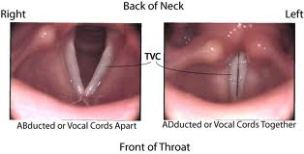I just completely lambasted another voice teacher (and I believe it to be called for). She vehemently disagreed with my assertion that learning to sing “classically” is NOT technically superior than learning through other styles…
I was going to shoot back a very terse two-sentenced reprimand… yeah, well, my two sentences pretty much turned into this article. To be clear: I have no problem with disagreement, or having back and forth discussions about vocal topics. If it is in the spirit of mutual understanding, great, if not, well… professionalism be damned! Here it goes…
(The article she refers to is this one, if you care to read it: Is “Classical” Voice Training Best?”)
I disallowed her comments to post in the replies to the article because I was not going to be nice, and more specifically, I did it so I could reply without having to reveal her name. I’ve encountered the “type” many times, and they tend to be the ones who only discouraged their students from the music they like to sing. Her reply to the article:
“Much obliged to you for your post!Bunches of magnificent data including, yet Classical strategy is significantly less convoluted than other singing technique.To take in this system, a couple of things must happen. In the first place, we should inhale and bolster low on our bodies – this is combined with appropriate adjust and stance. Next, we should sing clear, round vowels with an open throat. These are the standards I was most centered around as a youthful traditional artist, handling tunes from the greats like Puccini, Schubert, Barber, and that’s only the tip of the iceberg.” (I removed her name)
My reply:
I will shout this from the rooftops until the day I die… BEING TAUGHT TO SING BY STUDYING CLASSICAL SINGING DOES NOT MEAN THAT YOU LEARN TO SING BETTER… PERIOD! FURTHERMORE, AS I EXPLAIN LATER IN THIS POST, I WOULD ARGUE THAT THE OPPOSITE IS OFTEN TRUE.
Classical music is a music style of singing. Classical singing is not a technique.
Let’s say that again to be clear, and to be sure that my premise is rightly understuood: Classical music is a music style of singing. Classical singing is not a technique.
If classical singing is a technique, then I would argue that, on the whole, it is a poor technique. Within classical music, there are actually many dozens of different vocal techniques taught, though they are all applied to one style… the general category of classical music.
Classical music does not dictate proper technique, nor does singing with a precise, controlled technique necessitate have ever sung one note of classical music. Were that not the case, there would be no good singers with great technique outside of those who have sung songs primarily in opera or the classical genre in general.
In fact, I would go a step further and argue that most classical singers sing poorly, with an out-of-control vibrato, a pressed, driven or covered tone, or they have chest and head registers that are utterly disconnected. One might retort that statement by declaring, “Good opera singers don’t do those things!” The same, however, is true of pop, jazz, rock, country, musical theater, etc.
If a solid vocal technique principle is also solid physical principle, then no style owns it! Classical singers need to be taught the same, natural feeling and sounding technique that everyone should be taught as well. A physical principle IS NOT tethered to a particular style of music.
I studied and sang classical music and many other styles. I was an instrumentalist who studied and played classical and many other styles. I learned EVERY BIT AS MUCH about the voice and the instruments from playing and singing other styles. Maintaining good technique is equally challenging, depending on the songs attempted (true of classical as well), in every musical style.
To put it like a friend of mine use to say to people, “It ain’t as easy as it looks, sister!”
I DO believe and fully admit (as it would be hard to argue otherwise) that the traditional discipline and organized approach to learning technique (good or bad technique!) is found more often in classical regimens. While I believe that to be true in general, when the same regimen of practice (not a regimen of style, but one of an organized approach and application of sound vocal pedagogy) is applied with sound vocal principles to any style (evidenced by a voice with no breaks throughout the ENTIRE vocal range, which stems from a relaxed connection of chest and head voices with NO shift in tone or production… ANYWHERE in the voice), then style is utterly inconsequential.
There are enough terrible singers out there in every style, including classical and opera, to go around. One of my top three favorite male singers, Pavarotti, was a great singer, but so are many other singers who haven’t sung a lick of classical music.
I’ve seen the love of singing crushed right out of students by teachers who force their students to sing a style they dislike (usually classical) and then tell them they can’t do it right so they’ll never be able to sing other styles right, discouraging the student… when all the while it was the teacher’s lack of ability to understand the difference between a style of music and vocal production that, in my opinion, utterly disqualifies those instructors as voice teachers. These teachers’ lack of ability to teach is usually accompanied by an ego the size of Texas (for those outside the USA who don’t know… Texas is big!)
I would put up the majority of my students against the average professional opera singer, and I fear the opera singers would be put to shame.
Though almost done, my rant continues…! I love classical singing styles of all kinds, when performed well. I love teaching classical music, and I’ve worked with many fine opera singers, but if I can’t teach a technique that can just as easily apply to any other style, then I have no business teaching, or even discussing vocal technique. Instead, I should just stick to coaching a confined style of music…. or golf.
That all being said… Happy Singing!!
Eric Bruner
http://www.SingWithPower.com








